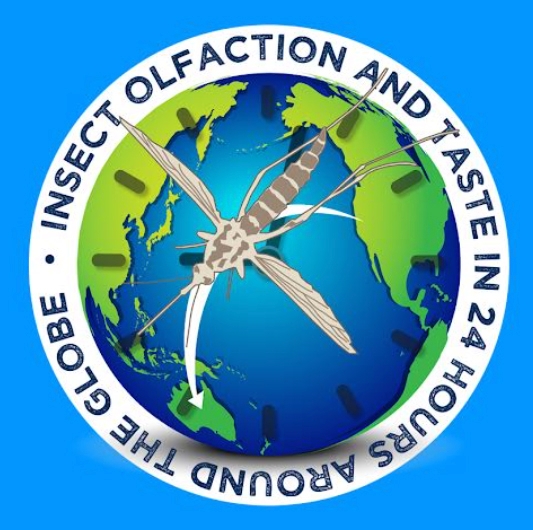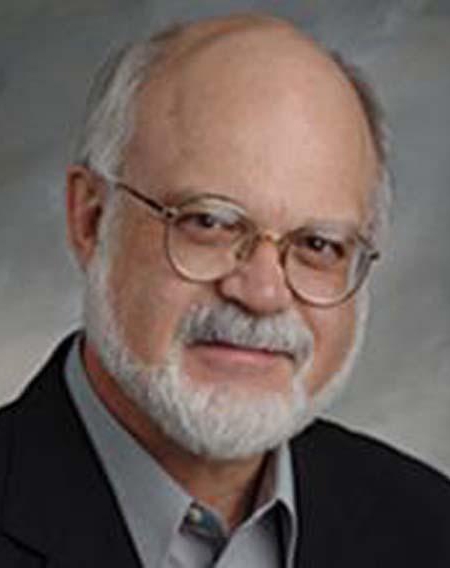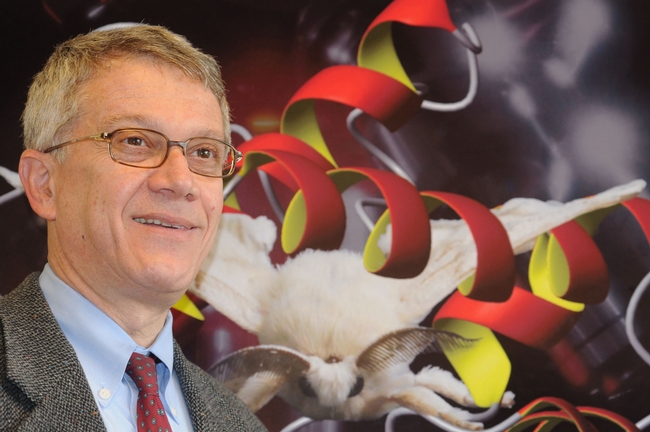
So began noted neuroscientist John Hildebrand in his keynote speech heralding the opening of the first-of-its kind international olfaction/taste symposium. Hildebrand is the Honors Professor and Regents Professor at the University of Arizona and the International Secretary of the National Academy of Sciences.
UC Davis distinguished professor Walter Leal coordinated and co-hosted the Zoom symposium, titled “Insect Olfaction and Taste in 24 Hours Around the Globe.” The free event drew attendees from 66 countries.
The presentations, which began at 9 a.m., Pacific Daylight Time (PDT), Wednesday, Aug. 11, were uploaded to YouTube. All ten videos from the symposium are now online:
- Video One is at https://youtu.be/QlyNCZtSvtY
- Video Two is at https://youtu.be/-aO8-1yfQRI
- Video Three is at https://youtu.be/2SsQvYlXKXY
- Video Four is at https://youtu.be/hmmEac7MliI
- Video Five is at https://youtu.be/60D99Z6nJI8
- Video Six is at https://youtu.be/rZ7i4d7VogQ
- Video Seven is at https://youtu.be/19ukK_R7eKE
- Video Eight is at youtu.be/eROTKZFhu9w
- Video Nine is at https://youtu.be/uVrESHyAyvU
- Video Ten is at https://youtu.be/-XUuKGYbByc

"As an undergraduate student, I started in research working on bacteria in the laboratory of the biochemist John Law," he related. "At that time he was beginning to redirect his research to problems in insect biochemistry and among other projects; he was collaborating with the biologist E. O. Wilson in studies of ant pheromones. The term pheromone had been invented only three years earlier in 1959 in Germany by Peter Carlson and Martin Luther, and in that same year another German out of Bhutan and his group had reported the first chemical identification of an insect pheromone."
That was the silk moth pheromone, Bombykol, released by the female silkworm moth (Bombyx mori) to attract mates.
The rest, they say, is history. Insect history.
The symposium included 15 invited (keynote) and 36 contribution presentations,” said Leal, a UC Davis distinguished professor with the Department of Molecular and Cellular Biology and a former chair of the Department of Entomology (now the Department of Entomology and Nematology). Leal hosted the PDT segment. Wynand van der Goes van Naters of Cardiff University, UK, hosted the British Summer Time (BST) segment; and Coral Warr of La Trobe University, Australia hosted the Australia Eastern Standard Time (AEST) segment.
The presentations covered a wide variety of insects, including three species of mosquitoes (Culex, Aedes and Anopheles); honey bee (Apis mellifera); fruit flies (Drosophila melanogaster, Drosophila sechellia, and Drosophila suzukii); sand flies (the blood-sucking dipteran flies); cotton bollworm (Helicoverpa armigera); housefly (Musca domestica); cabbage butterfly (Pieris rapae); and the American cockroach (Periplaneta americana).
Some statistics:
- Total users (including those logging in periodically): 2,990
- 71 percent of the attendees surveyed said they were "very satisfied" with the symposium, and 12 percent "satisfied."
- 54 percent of the surveyed attendees had never attended a conference on chemosensation.
"One of the highlights of the symposium was the participation of students and postdocs who showcased their work and announced at the end, that they will be looking for a position," Leal said. "Other professors, at the end of their talks, advertised vacancies in their lab. I had asked all presenters to share some new data. In fact, many presenters showed unpublished data, while others showed data that they had already submitted to BioRxiv, a non-peer reviewed pre-print server."
At the closing, Leal selected two persons to give their impressions of the symposium:
- See opinion by Greg Pask, an assistant professor of biology at Middlebury College, Vermont: https://twitter.com/wsleal2014/status/1427040189147275271.
- See comments by Nathalia Brito, who just completed her Ph.D. at the Federal University of Rio de Janeiro: https://twitter.com/wsleal2014/status/1427431406527934490

- "I used to work in the field of insect taste and olfaction and have attended a couple of ESITO meetings (European Symposium for Insect Taste and Olfaction) when I was a grad student and in early days as a postdoc. This was a wonderful opportunity to see that latest advances in the field and see many of the people whom I had met in person talk and some new people."
- "Thank you to the organizers for coordinating such an informative and well run virtual event."
- "Great collegial and convivial atmosphere. Really good idea to have a commentary on the lectures."
- "I am working on bark beetle olfaction, so I am available in the future with this topic. Thank you."
- "I learnt a lot from different groups especially disease vectors. It was a privilege to listen to some of the big names in this area. Looking forward to a future meeting."
- "I would like say the heartiest thanks to everyone who worked on this webinar. I am doing research for more than 10 years and I never experienced such a wonderful scientific event. What you have done can not be appreciated by words."
- "Undoubtedly, this is the best symposium I have ever attended to. I was able to join with almost every presentation. As an early-career researcher in chemical ecology, this inspired me a lot. Hope to present in this meeting and getting to know great scientists in the future. Hats off to the organisers. Thank you."
- "Thank you for organizing! I only wish there were more detailed times for each presentation so I could be sure to tune in for specific talks, but this is a great concept!"
The detailed schedule of times and speakers was purposely not announced in advance "in order to keep attendance high when students, postdocs, and early-career scholars presented," Leal said, adding "I enjoyed listening to the student/early-career researchers talks. All of them were very interesting and well executed."
For more information and updates, follow Walter Leal on Twitter at @wsleal2014 or access his biochemistry channel where all the videos will be posted. Folks can also turn on YouTube and Chrome browser notifications to receive alerts.